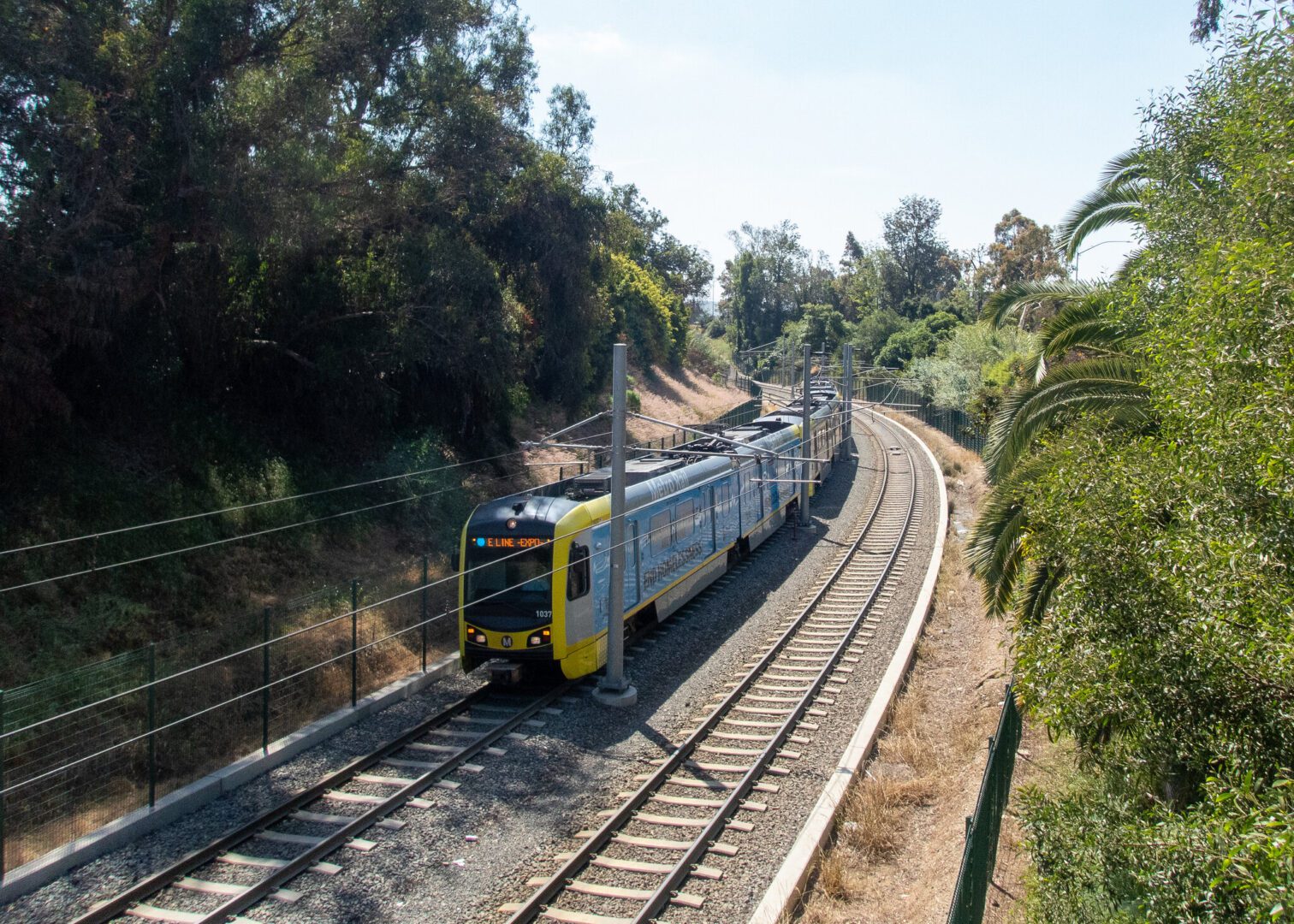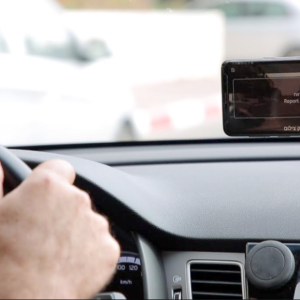 View Winners →
View Winners → 
Train on the E Line. | Photo by Daniel Melling / UCLA Emmett Institute (CC BY-NC 2.0)
Metro announced Monday a 15% year-over-year increase in ridership in July compared to the same time last year, and marked the eighth consecutive month of year-over-year growth.
The transit agency reported more than 23.3 million boardings. Average weekend ridership is now at 88% of pre-pandemic July 2019 levels, and 72% for average weekdays.
“These new numbers reflect the value Metro can provide by helping more people travel to more places in Los Angeles,” said Los Angeles Mayor Karen Bass, who also serves as the chair of the agency’s board of directors. “As ridership continues to increase, I want to encourage past and potential eligible riders to sign up for Metro’s GoPass and LIFE programs, which provide free rides for eligible riders.”
The mayor further added, “I look forward to seeing more increased ridership as Metro continues its efforts to make it safer and easier to take its buses and trains.”
July marked the first full month of operation for the newly reconfigured A (Blue) and E (Expo) Lines, as a result of the opening of the Regional Connector in June. The Regional Connector consolidated three of Metro’s legacy rail lines — A, E and L (Gold) Lines, into two: the A Lines, connecting riders from Azusa to Long Beach and the E Line, connecting riders from East L.A. to Santa Monica.
The project also opened three new stations in downtown L.A.
In July, ridership on the A and E Lines rose by 26% on the weekdays compared to the combined on the A, E and L Lines during July 2022. Ridership on the weekends rose nearly 42% compared to the combined ridership on the A, E and L lines in July 2022.
Ridership also rose on other parts of the transit’s rail system.
On the B (Red) and D (Purple) lines, where there has been an increased focus on safety and a sharp decrease in crime, ridership in July rose on both the weekdays and weekends by about 13% and 4%, respectively.
Weekend ridership was driven in part by special events supported by Metro, the Anime Expo (A Line), NoHo Summer Nights (B Line), Riverfest (A Line), Rock the Block (K Line), and a soccer match-up between the LA Galaxy and LAFC at the Rose Bowl (A Line).
Just in July, Metro said bus ridership rose by nearly a 12% year-over- year increase. Almost 18 million riders were taken on Metro’s buses, with total bus ridership in July at 75% of its level in July 2019, before the pandemic.
“We continue to be encouraged that more people are choosing to go to Metro on both bus and rail,” Stephanie Wiggins, Metro CEO, said. “We believe these ridership gains can be directly tied to our proactive efforts to improve the customer experience over the past year, from restoring our pre-pandemic level of bus service to making big improvements related to the safety, security and cleanliness on our rail system.”








































































































